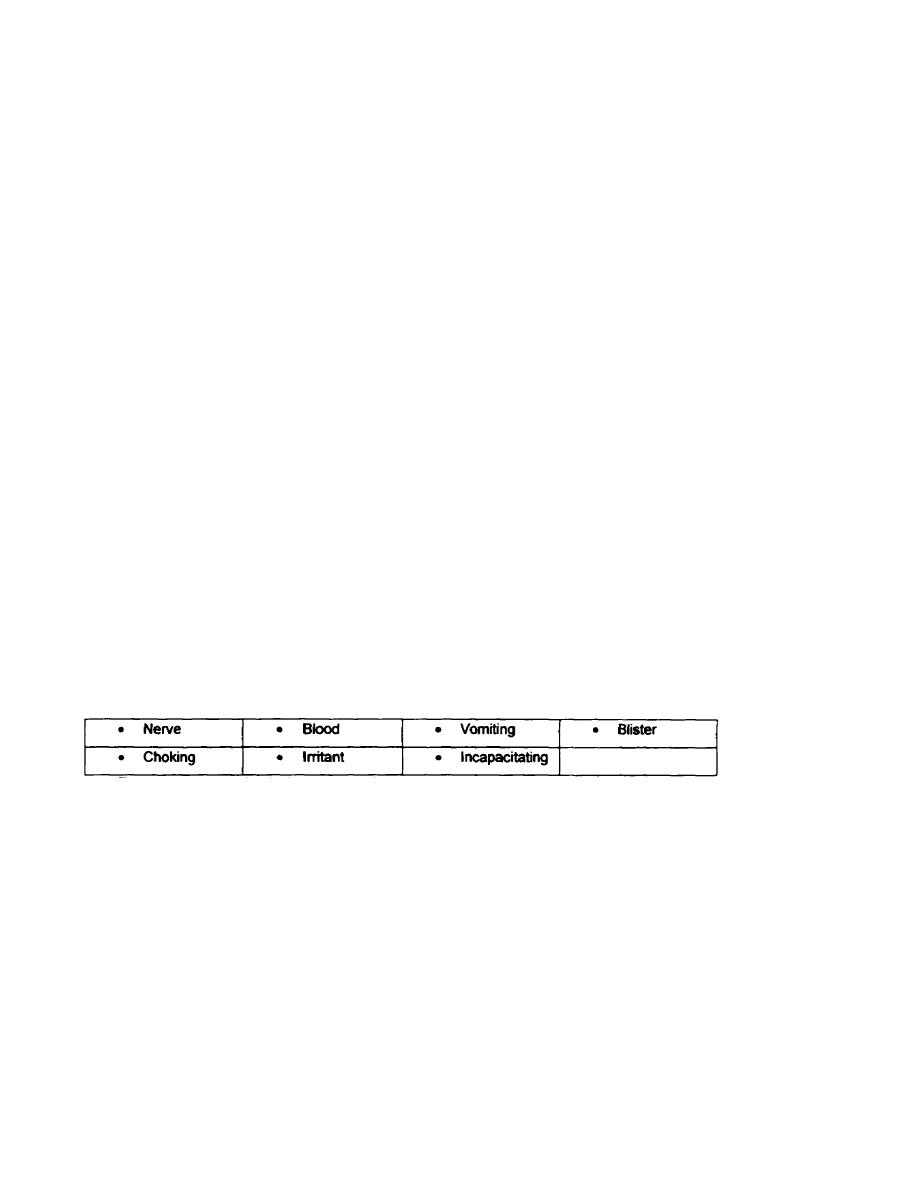
You should inform the personnel under your command that every effort is being made to develop a quick, simple, and
reasonably accurate method of detecting pathogenic microorganisms in water in the field. However, until a practicable BW
water detection kit is developed, the Army must rely on recognizing one or more of the following suspicious circumstances:
Enemy aircraft dropping unidentified material or spraying unidentified substances.
New and unusual types of bombs, particularly those which burst with little or no blast.
Smoke and mists of unknown source or nature.
Unusual or unexplained increase in the number of insects, such as mosquitoes, ticks, and fleas.
Any weapon not seeming to have any immediate casualty effect.
An increased occurrence of sick or dead animals such as dogs, livestock, or birds.
An increased incidence of sickness and disease among troops.
Intelligence reports indicating the possible use of BW by the enemy.
Chemical Contaminants. Chemical agents can be delivered on target by a wide array of weapon systems. Consequently,
CW agents are usable in a diversity of military situations. Chemical agents are of a search-and-destroy nature. They can
harm an enemy if they are widely dispersed in the open or in fortified positions, such as the use of mustard gas in World War
I. Chemical agents are antipersonnel in makeup. They do not destroy buildings, emplacements, power plants, communication
installations, equipment, or vehicles. These facilities can be used by friendly forces.
Chemical agents have an excellent capability of area denial. They are effective for both overt and covert operations.
They can travel around corners, diffuse through woods, and seep into dugouts and fortifications. Chemical agents offer a
spectrum of physiological effects from mild, temporary narcosis to severe bodily damage and death. They are colorless,
odorless, and tasteless.
The first indication of their use could be the appearance of casualties among military personnel. Chemical agents affect
people, animals, and plants but leave homes, factories, and other installations untouched. Most CW agents are relatively easy
to produce in large quantities at moderate cost. Chemical agents are classified into seven major categories:
Toxins are not included in the above list because they are usually produced by living microorganisms and are classified as
BW agents by the United States armed forces.
You need to inform your personnel that when considering threats to water supplies, the nerve agents tower above all
others.
Nerve agents function by inhibiting cholinesterase, a body enzyme.
With cholinesterase unavailable, the
acetylcholine essential to the functioning of the nervous system cannot be neutralized, and the body is stimulated to death.
The physiological symptoms of nerve agents on the human body are:
Unexplained runny nose.
1-34



 Previous Page
Previous Page
